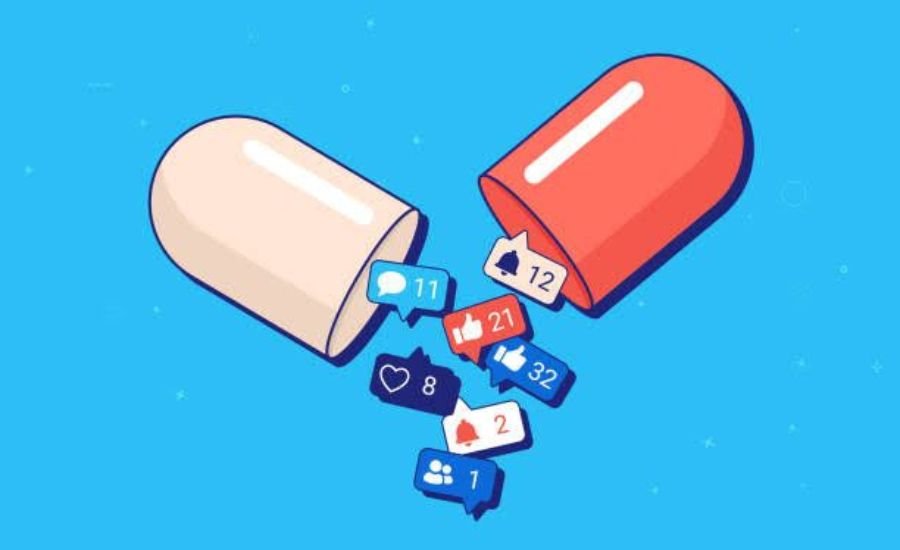A Digital Habit That Shapes Health
Social media has become part of routine life. People check their phones first thing in the morning and before going to sleep. What began as a tool for communication is now a lifestyle habit that influences how people think, feel, and act. This constant connection has benefits, but it also brings invisible effects on both mental and physical health. From posture problems to emotional fatigue, social media touches nearly every part of human well-being.
Mental Health Connection
Scrolling through social platforms can be relaxing, but it can also become addictive. The constant stream of notifications gives small bursts of satisfaction that keep users coming back. Over times, this pattern can lead to anxiety, distraction, and emotional exhaustion.
Comparing one’s life to what appears online can increase feelings of inadequacy. Most people share only highlights, not struggles. This creates unrealistic expectations that affect self-esteem and confidence. Study shows that heavy social media use is linked to higher chance of stress and depression, especially among young users. Learning to take breaks and set screen limits can help restore mental balance.
Physical Effects of Prolonged Use
The body reacts to digital habits in subtle but significant ways. Long hours spent on phones or computers lead to poor posture, neck strain, and eye fatigue. The term “tech neck” has become common because of how often people look down at their screens. Lack of motion is another problem. Social media often replaces outdoor activities or physical exercise. Sitting for hours reduces circulation and can cause muscle stiffness, weight gain, and even sleep problems.
Blue light from screen disrupts the body’s natural sleep rhythm, creating it harder to fall asleep or stay asleep through the night. Over time, this affects energy levels, focus, and productivity. To counter these effects, experts recommend regular breaks, stretching, and using devices in proper lighting. Small adjustments can make a big difference in long-term health.
The Intense Side of Digital Life
Social media was created to connect people, but it can sometimes make them feel more isolated. Seeing others’ achievements or filtered images can cause envy or sadness. For many users, the pressure to post perfect photos or updates adds unnecessary stress.
At the same time, social media can also promote emotional healing. Online support groups, mental health pages, and wellness communities offer comfort to people who might feel alone in real life. The key lies in how platforms are used. Tools like Instagram Story Viewer allow users to track engagement and understand how content resonates with followers. When used wisely, such insights can encourage positive storytelling and inspire healthier conversations.
The Balance Between Digital and Physical Life
Balancing both online and offline activities is essential for health. Spending time outdoors, exercising, or enjoying hobbies helps reduce digital fatigue. Real human contact remains one of the most powerful ways to support mental wellness. Some people use apps to monitor screen time and manage usage patterns. Features like Instanavigation can make digital activity more efficient, reducing the time spent switching between accounts or pages. This helps maintain focus and prevents endless scrolling. Simple steps such as setting phone-free hours or keeping devices away from the bedroom promote better sleep and mindfulness.
Exploring the Relationship Between Social Platfom and Body Image
One of the most discussed topics today is how social media affects body image. Filters and editing apps often distort reality, making users believe that physical perfection is achievable. This can be body dissatisfaction and unhealthy behaviors. Fitness influencers who share their journeys honestly, including struggles, help normalize imperfections and promote a healthy body image. When social media becomes a space for honesty rather than comparison, it can uplift self-image instead of harming it.
Healthy Use for a Healthier Mind
Social media does not have to be harmful. Setting limits, curating positive content, and avoiding comparison help create a balanced relationship with technology. With the rise of using AI in social media marketing, platforms are now better able to promote personalized, positive, and uplifting content to users. It is not about deleting apps but about using them with awareness. When users take control of their habits, social media can become a tool for motivation rather than stress.
Conclusion
Social media influences both the mind and body more than most people realize. While it connects the world, it can also drain focus and energy if used without limits. Healthy communication, physical movement, and screen awareness can reduce its negative effects. Technology should support well-being, not take away from it. At the heart of it all lies balance. A mindful approach to social media helps preserve both mental clarity and physical strength, allowing users to enjoy the digital world without sacrificing real-life health.







